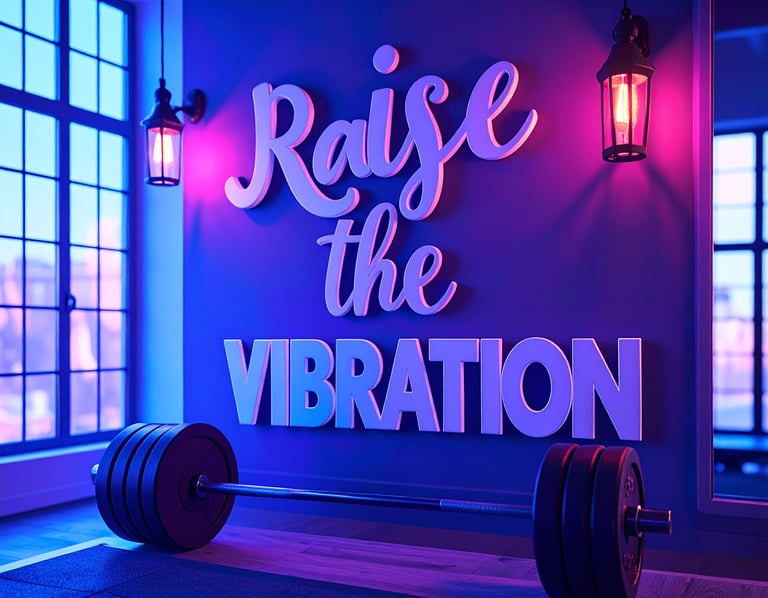Beginner's Guide to At-Home Workouts


Simple At-Home Workout Routine for Beginners
If you’re new to working out or just starting your fitness journey, you’re in the right place. I'm excited to share a simple at-home workout routine that’s perfect for beginners. Everyone has to start somewhere, and the most important thing is right now you are taking steps towards becoming a healthier you.
Now of course we hear all the great benefits about working out, and despite all of the benefits associated with it, beginners frequently encounter roadblocks that hinder their progress.
Common challenges include:
No time for the gym
Lack of motivation
Uncertainty about how to develop an effective workout routine
For these reasons, it's important for you to cultivate a positive mindset and approach your fitness journey with patience and consistency.
Establish achievable goals in the beginning. Then, gradually increase workout intensity as the body gets acclimated to the new you, creating a sense of accomplishment that fuels further commitment.
But first, we stretch
Starting your day with a gentle stretching routine will loosen your limbs and prepare your body for the day ahead. Here are some beginner-friendly stretches that you can do every morning:
Floor Stretches
**perform these stretches gently and never push to the point of pain**
Cobra Pose: Lie face down on your mat, Place your hands under your shoulders, fingers spread wide. As you inhale, begin to lift your chest off the ground, using your back muscles. Hold for 3-5 breaths, then gently lower back down This stretch helps release tension in your lower back.
Spinal twist: Sitting up straight, bring one knee across your body, and opposite elbow to knee. Hold for 15-20 seconds on each side
Child’s pose: Kneel on the floor (on your knees), sit back on your heels, and stretch your arms forward. Your upper body should be on the floor.
Warm-Up
Start with a 5-minute warm-up to get your body ready to workout:
Marching in place: This gets your heart pumping and warms up your legs.
Arm circles: While standing, raise your arms out to the side and rotate them forward for 20 seconds. Pause, then rotate them backwards for 20 seconds.
These loosen up your shoulders and upper body.
Gentle twists: While standing, put your hands on your hips and twist your upper body to the right. Hold for 10 seconds, and release. Twist to the left. Hold for 10 seconds and release. (repeat as necessary) These help warm up your core and improve spinal mobility.
Main Workout (circuit)
**Do each exercise for 30 seconds, then rest for 30 seconds before moving to the next one. Repeat the circuit 2-3 times**
Bodyweight Squats: Stand with feet shoulder-width apart, then lower your body as if sitting back into a chair. This exercise strengthens your legs and core.
Modified Push-Ups: Do these on your knees if regular push-ups are too challenging. Push-ups work your chest, arms, and core.
Lunges: Step forward with one leg, lowering your hips until both knees are bent. This improves balance and leg strength.
Plank Hold: Start on your forearms and toes, keeping your body in a straight line. This is great for core strength and stability
Cool-Down Stretches
**Hold each stretch for 15-30 seconds**
Standing forward bend: While standing, gently reach for your toes. This stretches your hamstrings and lower back.
Shoulder stretch: Bring one arm across your chest. This helps relieve upper body tension.
Seated twist: Sit on the floor and gently twist your upper body. This is great for spinal mobility.
Recovery Day:
Recovery days are equally important in any fitness regimen. They allow your muscles the necessary time to repair and strengthen. Overtraining can lead to muscle fatigue and potential injuries. During these recovery days, continue to stretch, but also consider engaging in low-impact activities like yoga or walking.
In addition to proper stretching and rest, self-care practices can significantly enhance recovery. Techniques such as foam rolling, massage, and adequate sleep contribute to muscle recovery. Proper hydration and nutrition are the most important than anything else; Drinking water before, during, and after your workouts keeps your body adequately hydrated. Additionally, consuming a balanced diet rich in proteins, carbohydrates, and healthy fats assist in recovery and muscle growth.
One of the primary benefits of at-home workouts is that they often require minimal equipment. Starting your fitness journey at home does not require a large financial commitment. With a few key pieces of equipment and the ability to use your own body weight, you can create an effective workout routine that suits your needs. Items such as: dumbbells, resistance bands, and exercise mats provide a solid foundation for your routine. This will allow you to confidently take your first steps towards a healthier lifestyle without feeling overwhelmed by costs or equipment choices.
I'm proud of you for taking this step towards a healthier lifestyle. Keep up the great work, and don’t forget to celebrate your progress, no matter how small it may seem!


